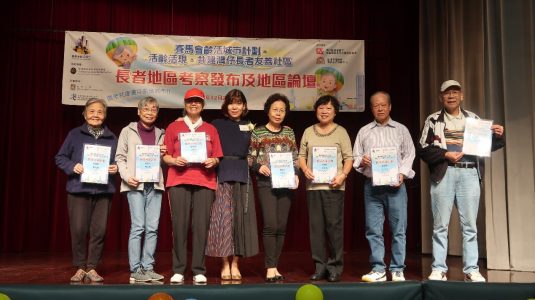We Build Age-friendly City in Wan Chai Together



The St. James’ Settlement Wanchai District Elderly Community Centre with support from the Jockey Club Age-friendly City Project organized the Age Friendly City programme to improve age-friendliness in outdoor spaces and buildings as well as facilitate social participation, and communication and information within the district. In collaboration with the District Council and local care centres, the programme provided older adults with the opportunity to share their opinions about outdoor spaces and buildings in Wan Chai district, and express these views through social media.
The programme had two components. The first part included age-friendly city ambassador training to increase the knowledge and awareness of age-friendly outdoor spaces through community auditing and micro-film production. Led by a social worker, participants visited various public spaces in the district including Lee Tung Street, Tai Fat Hau park, Li Chit Garden, open spaces in Canal Road West bus station, and the roof top of The Pawn. Participants also used photos and videos to document the outdoor spaces that concerned them during the community audit. All of these photos and videos were then used to produce a micro-film for a community screening event. This was followed up with a sharing session, participants shared their concerns and made suggestions for improvement to the public, including representatives of the District Council. This training empowered older people to voice their opinions and concerns to relevant stakeholders in the district.
The second part of the programme included a smartphone and tablet training. This training equipped older people with the skill to obtain community and age-friendly related information through different on-line platforms
Main target group: Older people in general
Other target group(s): The general public
Sector(s): Information and communication
Desired outcome for older people:
Meet their basic needs